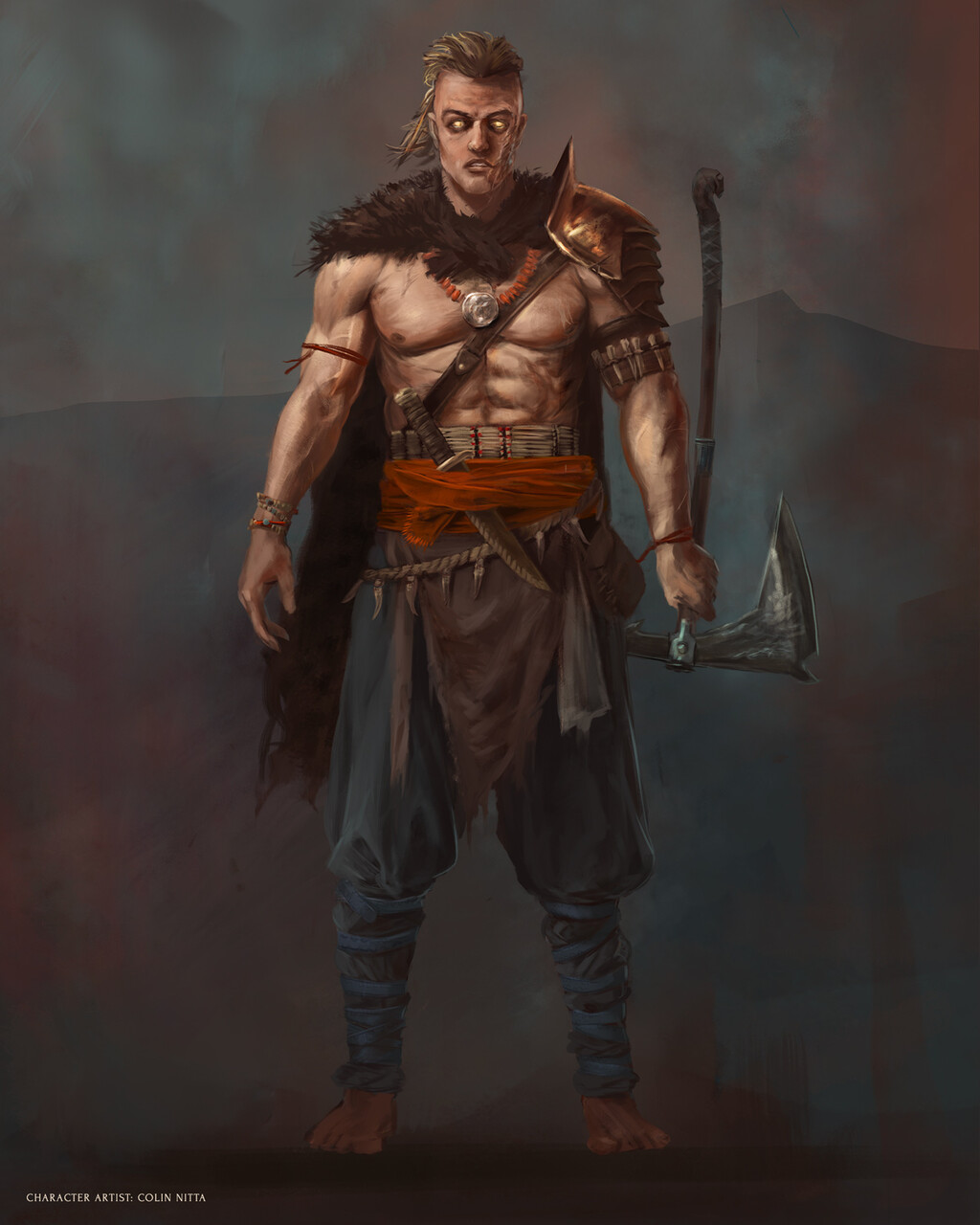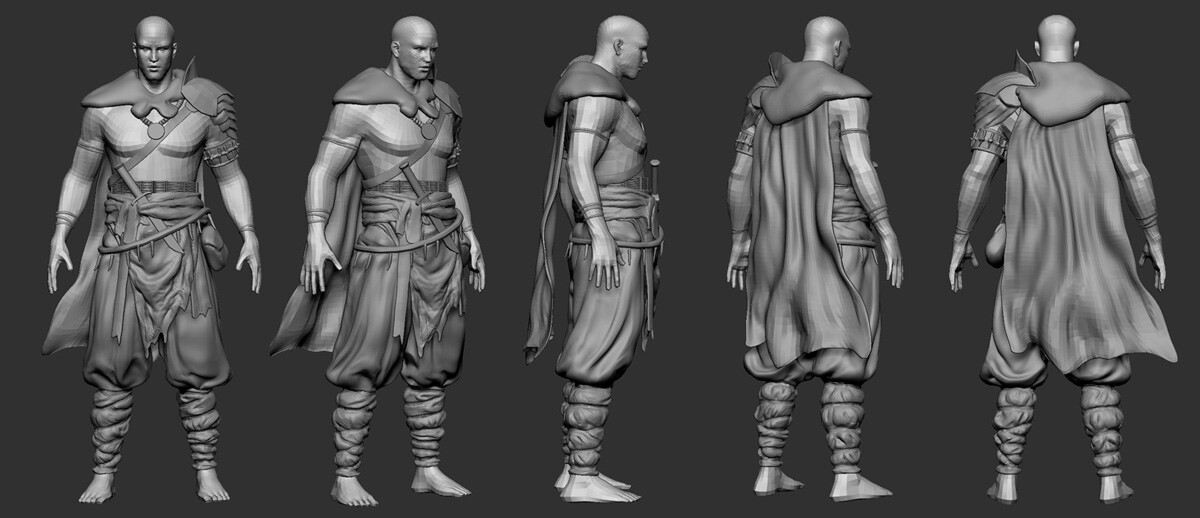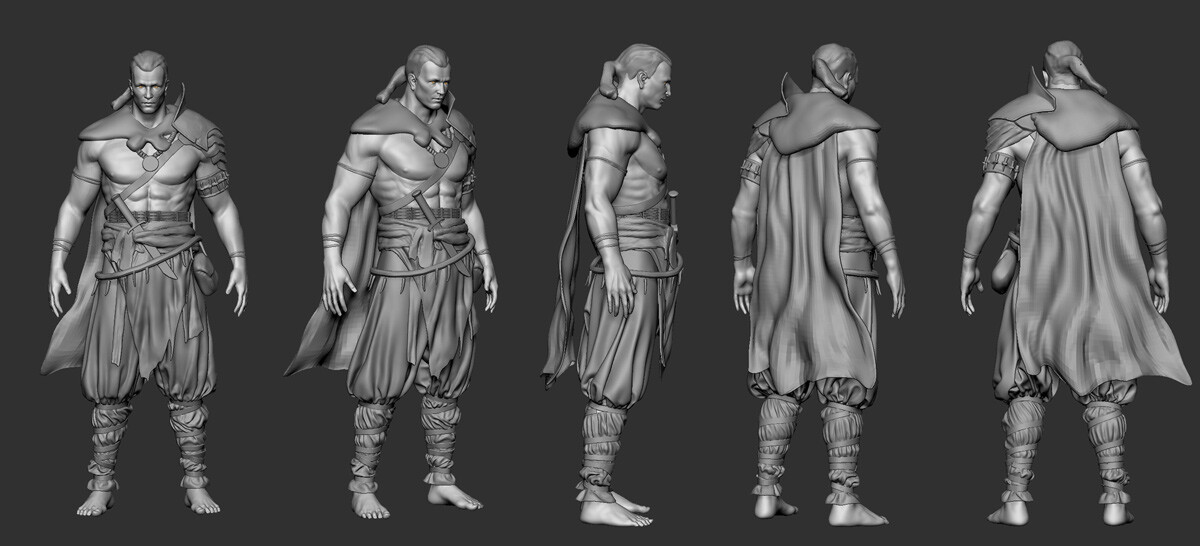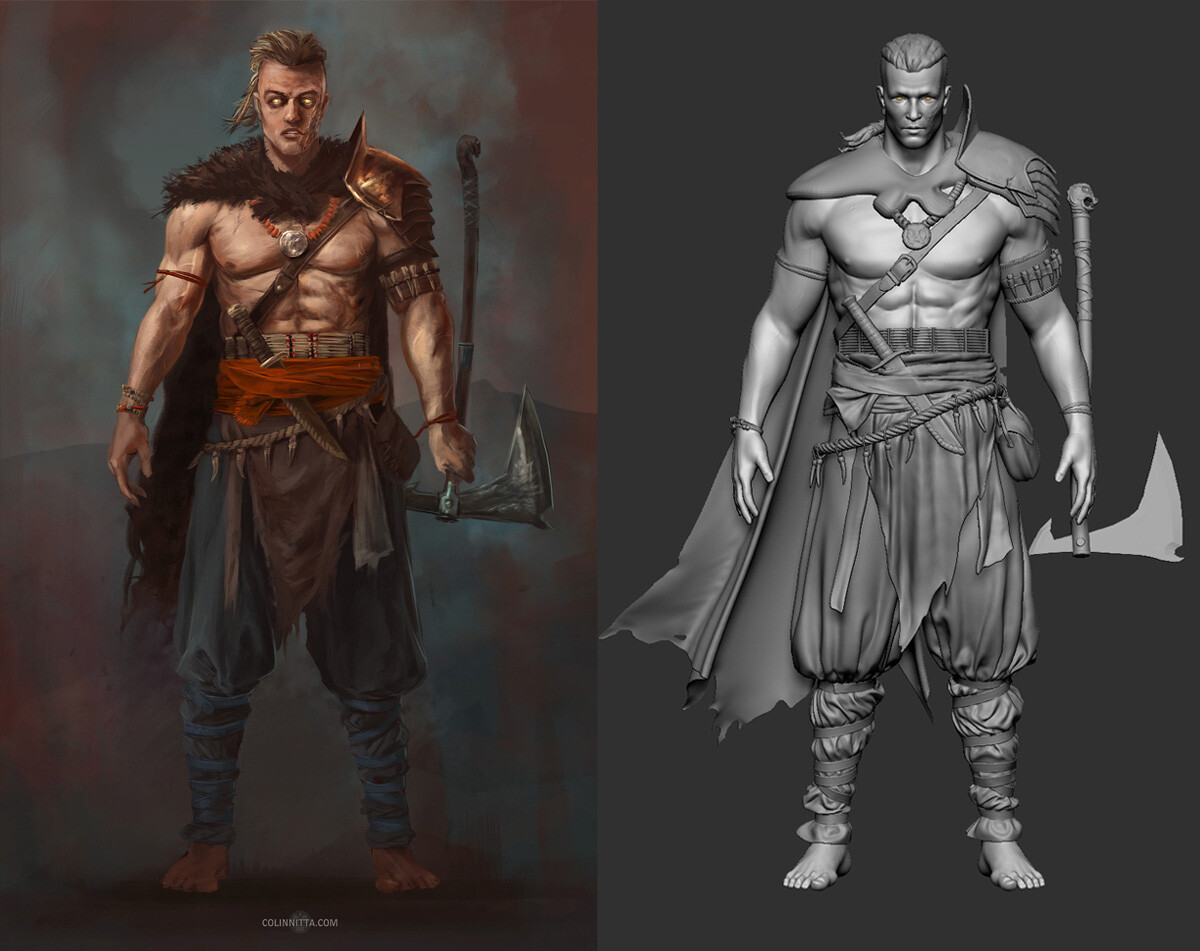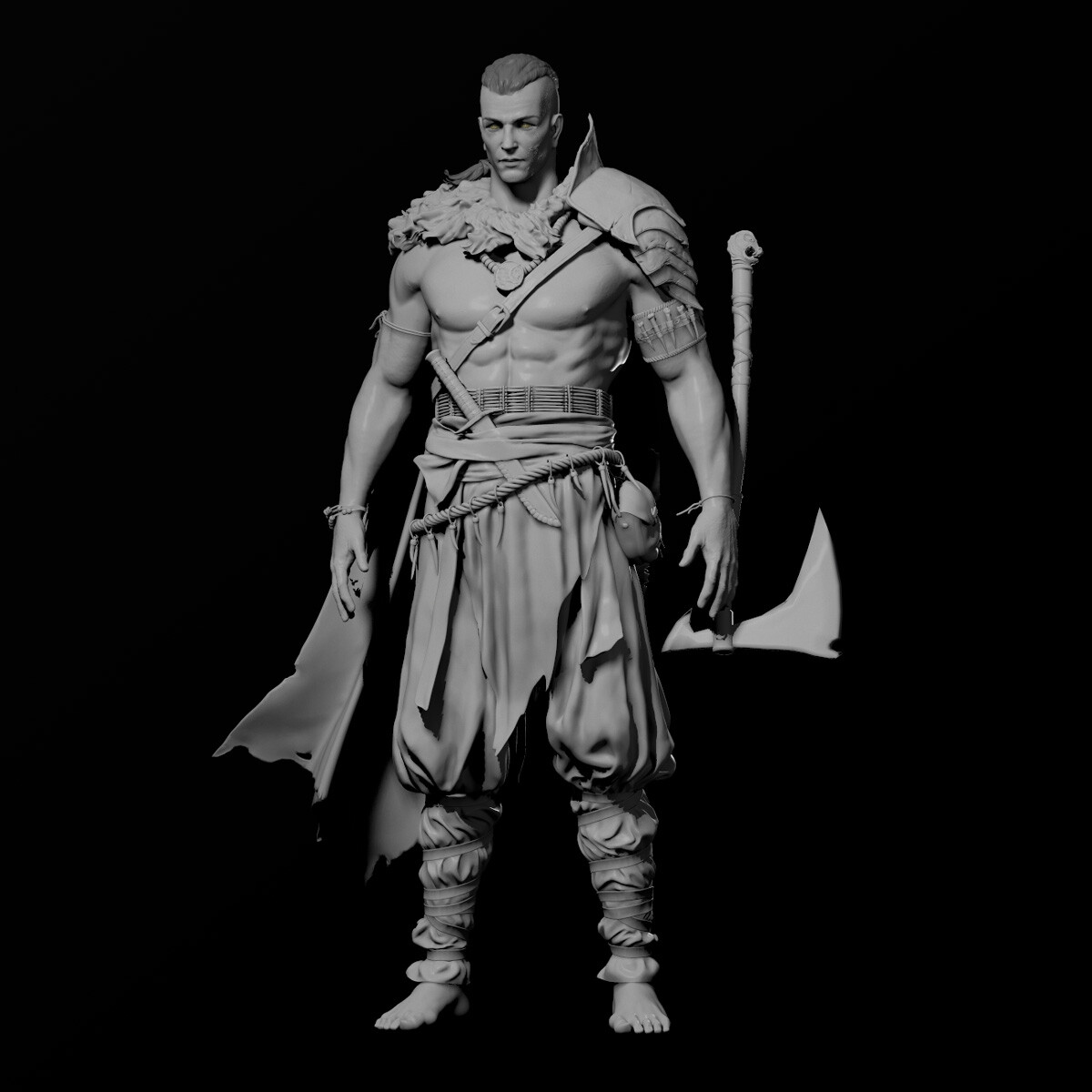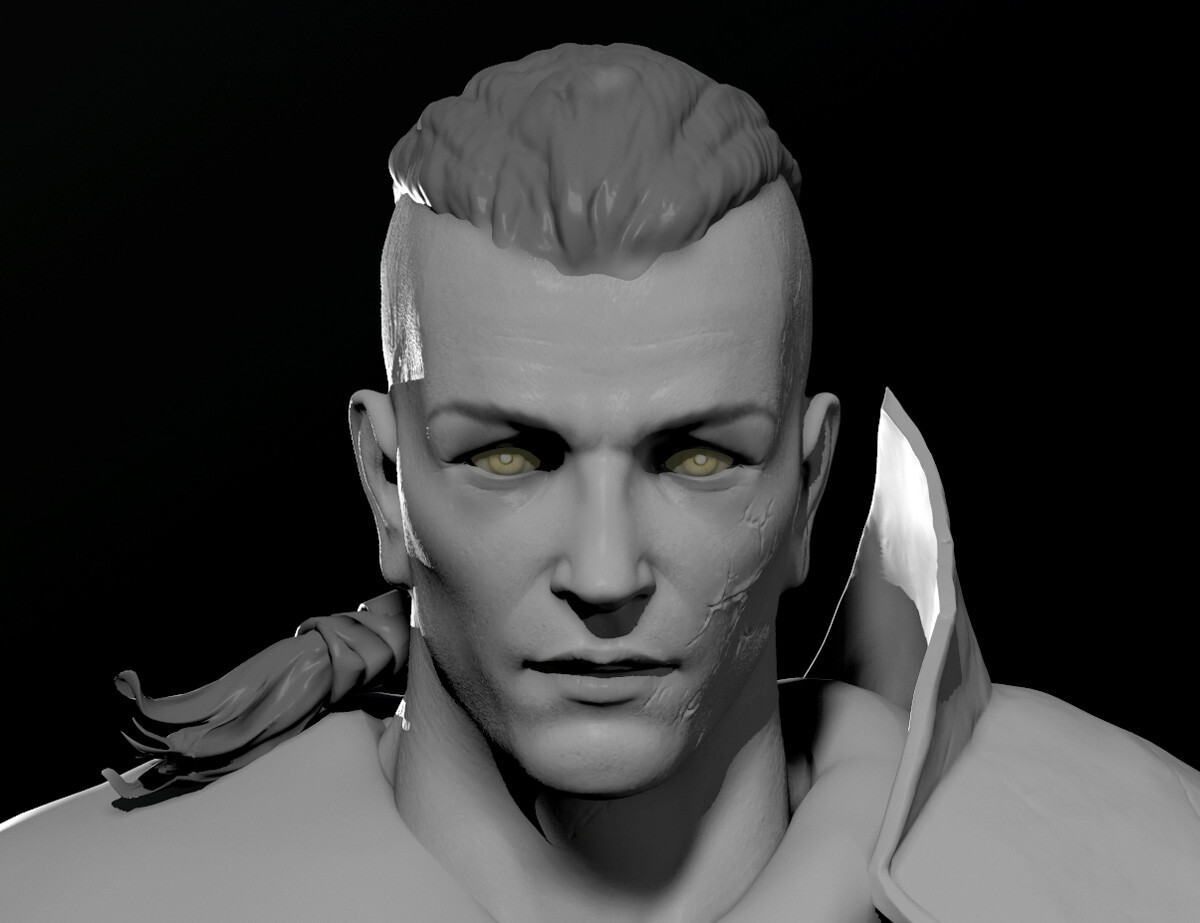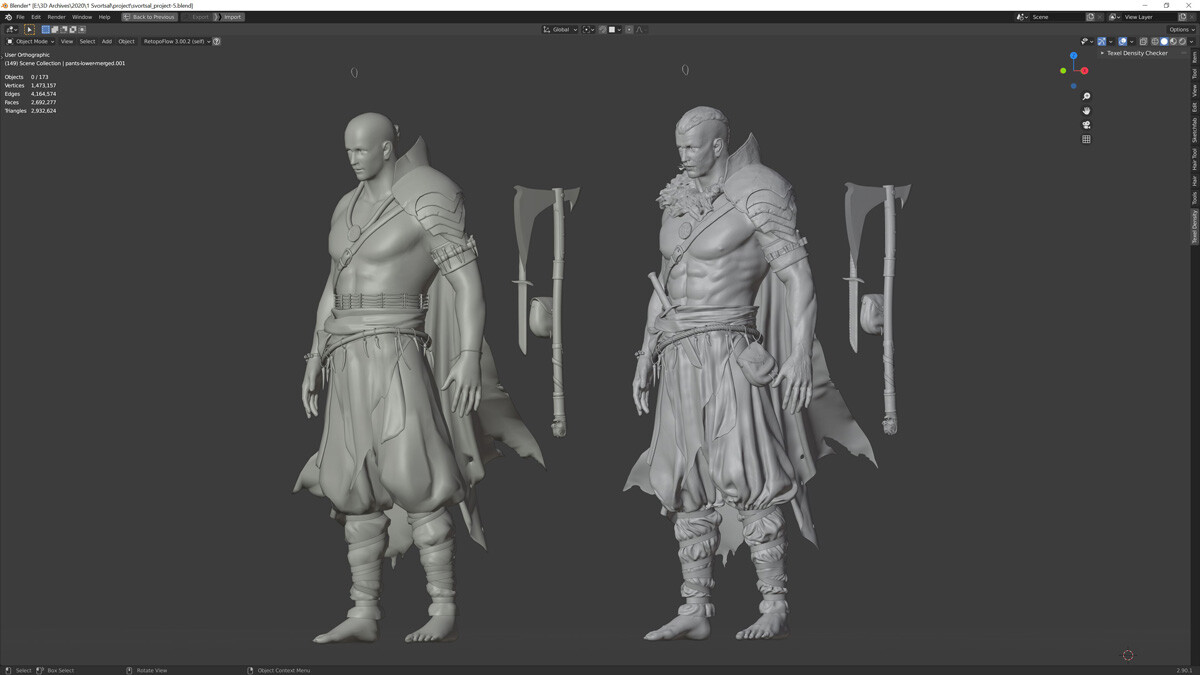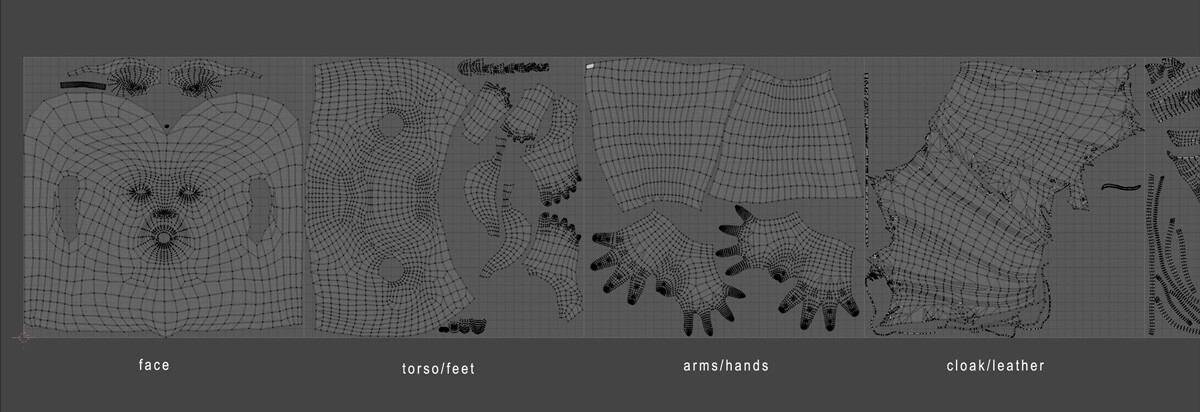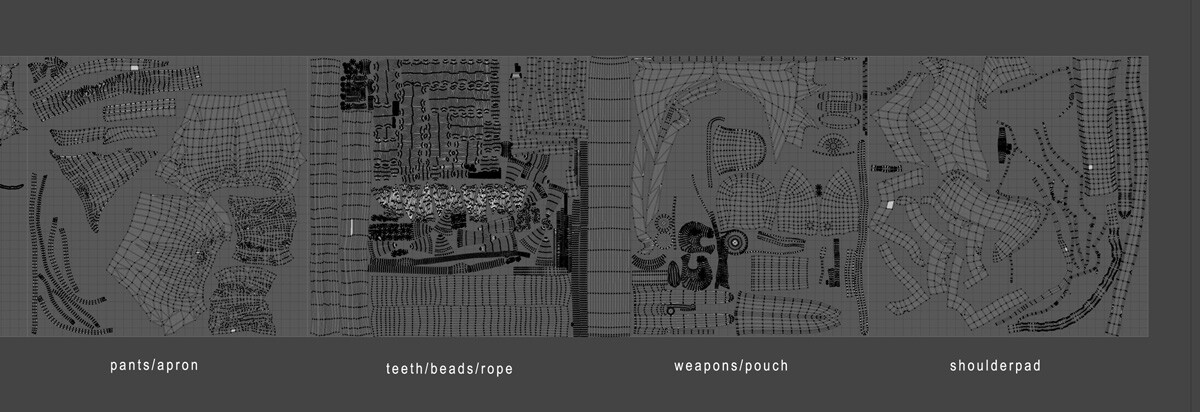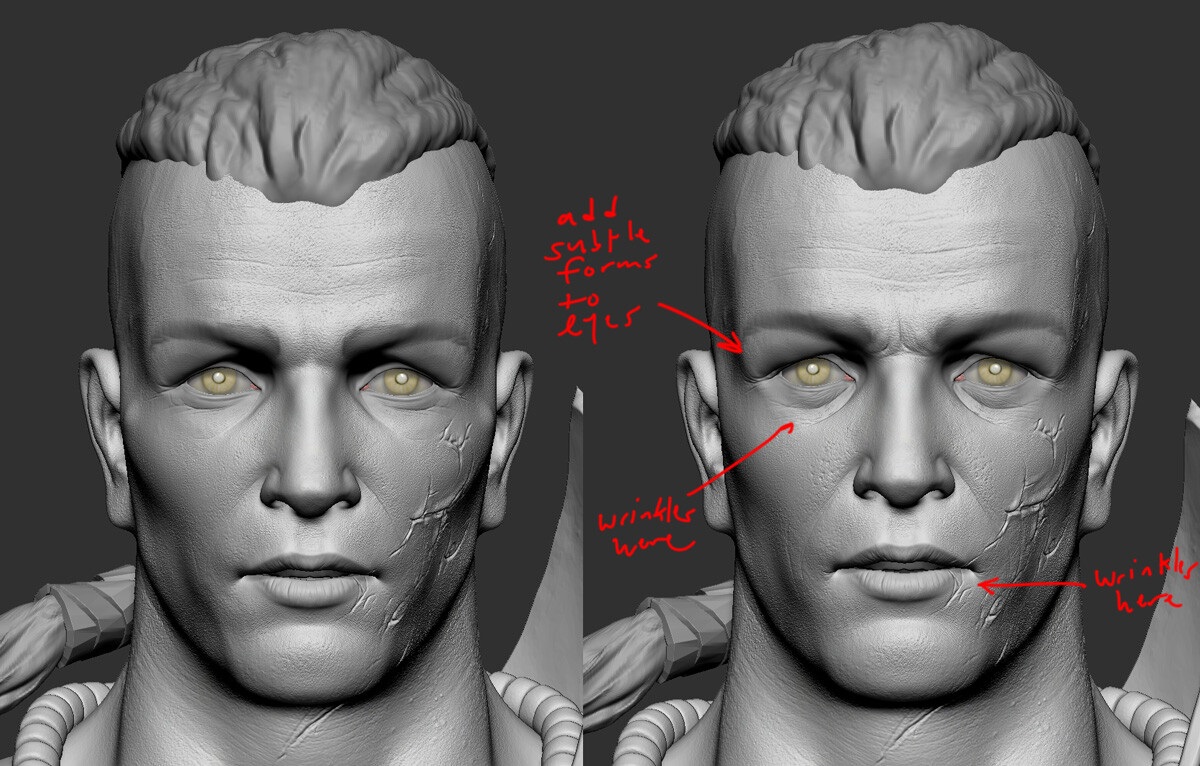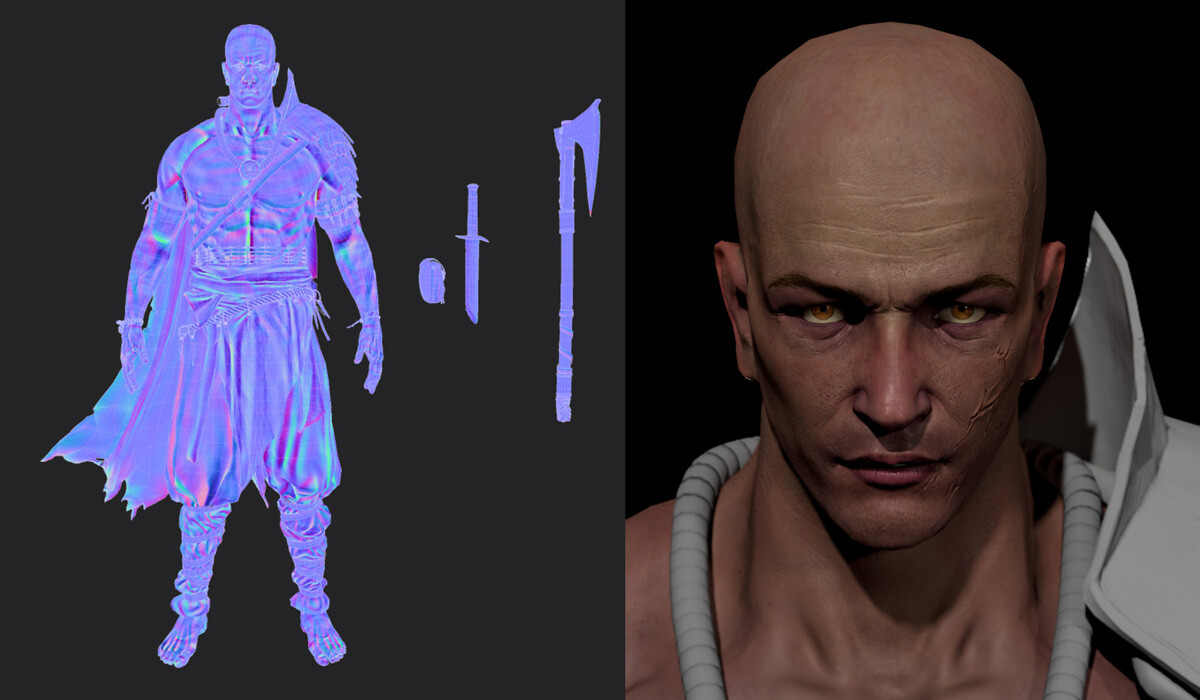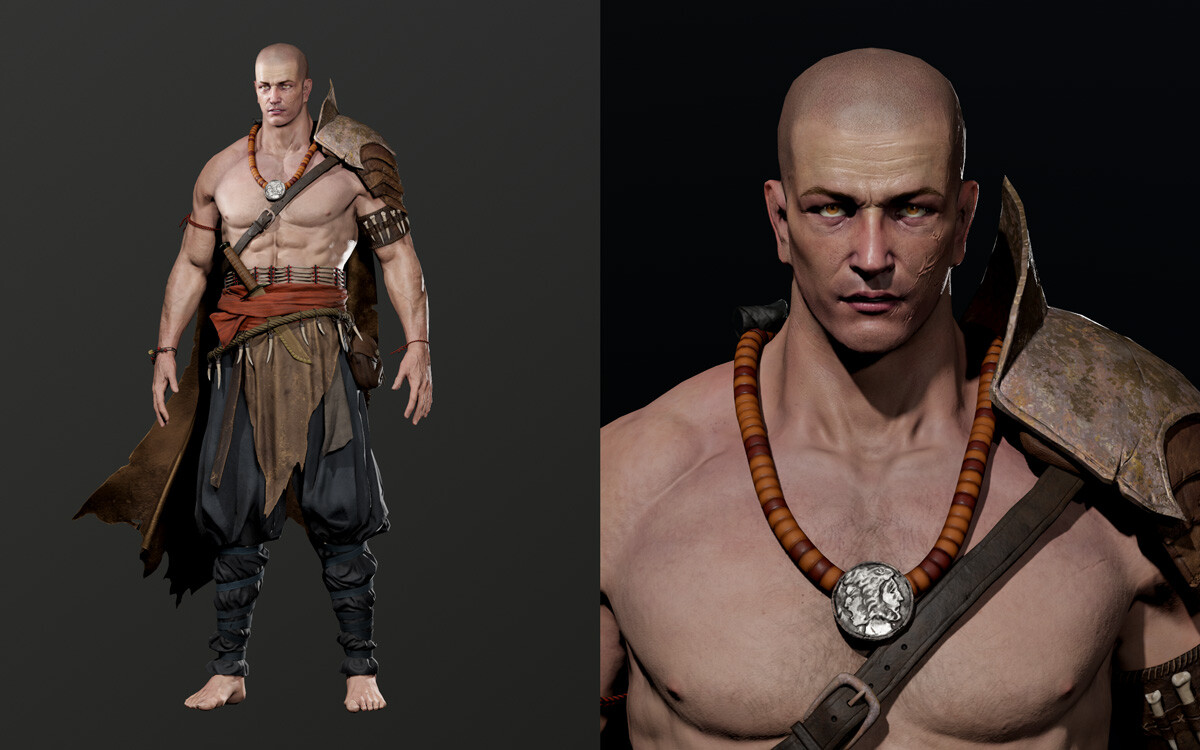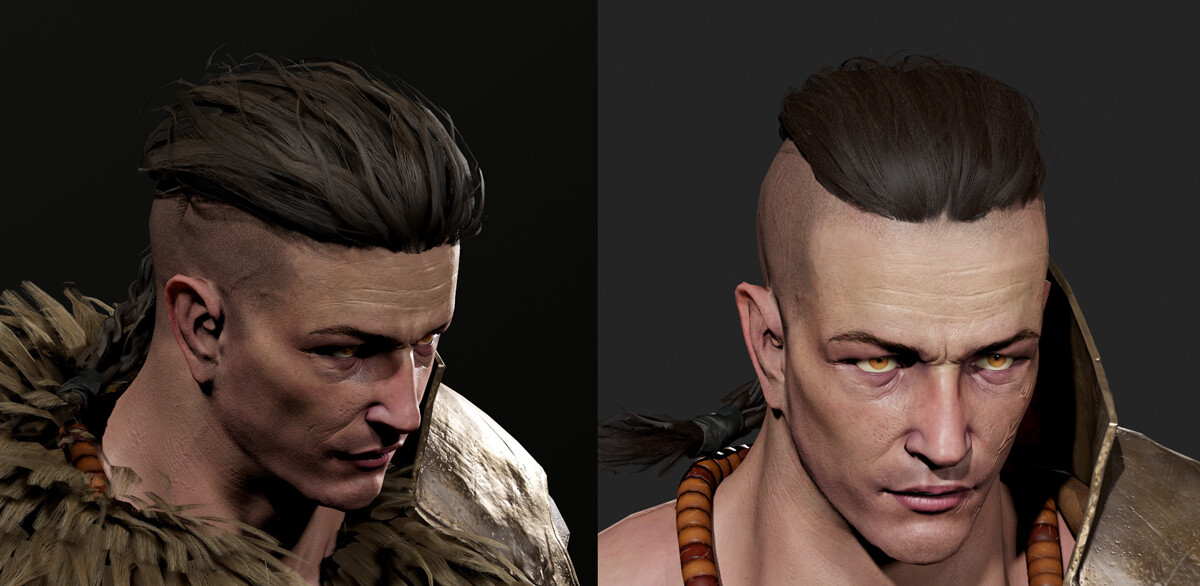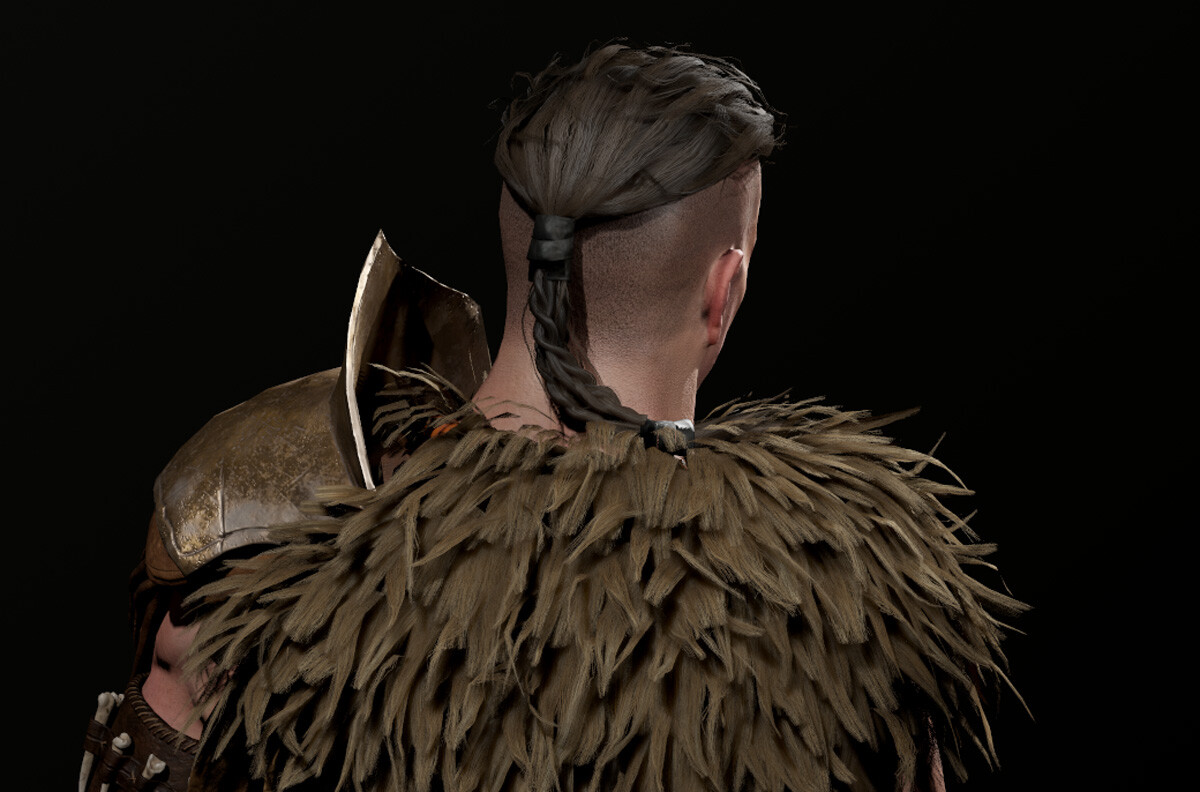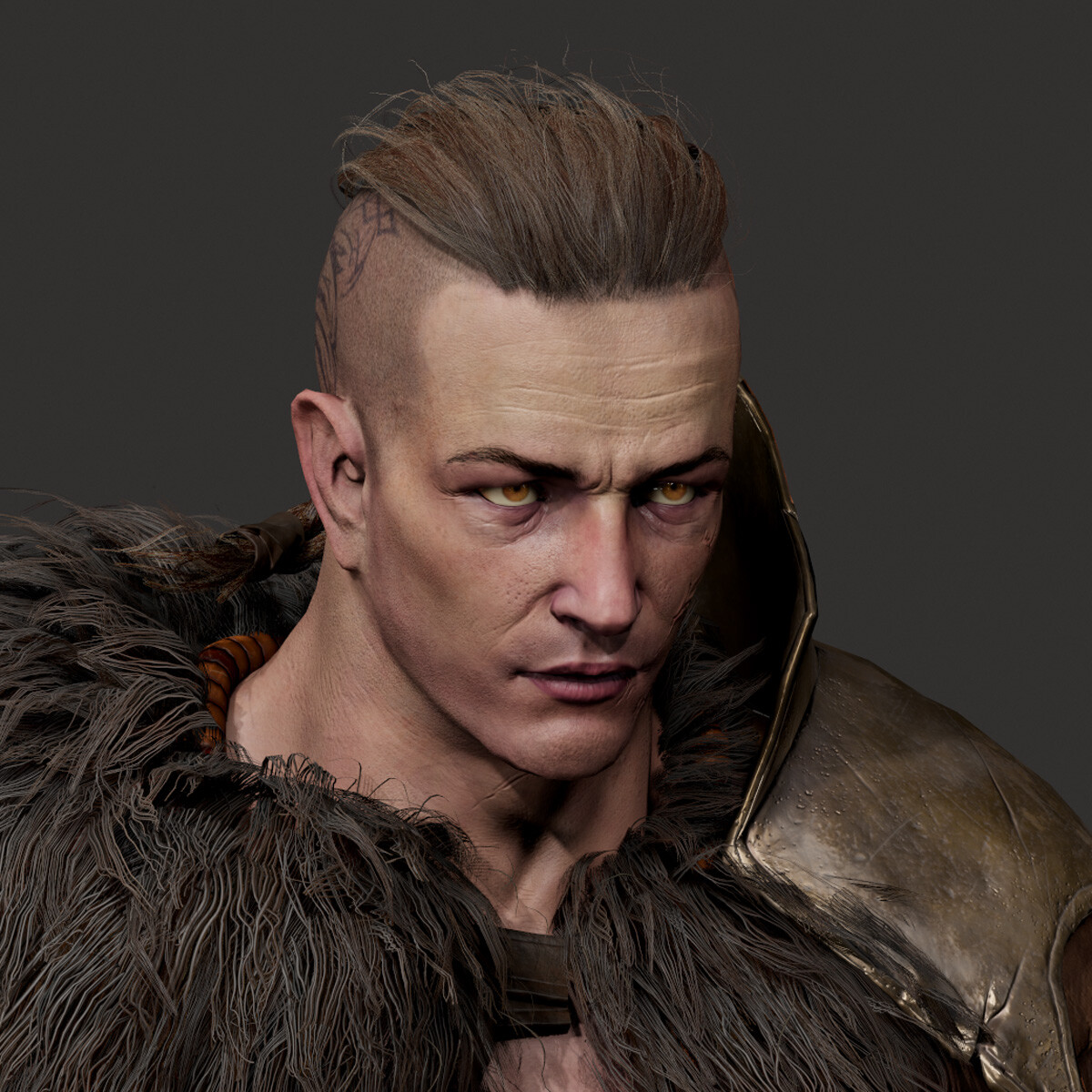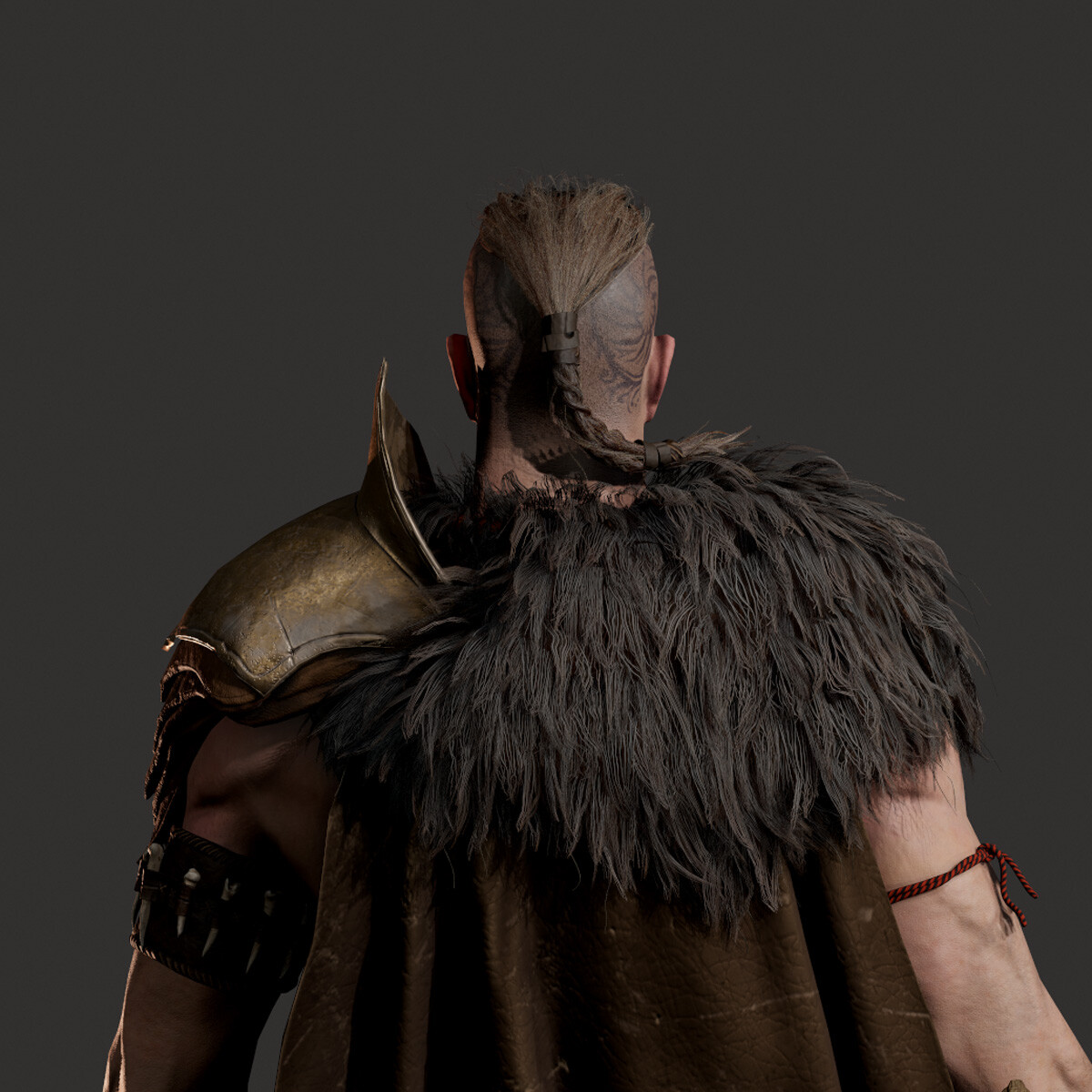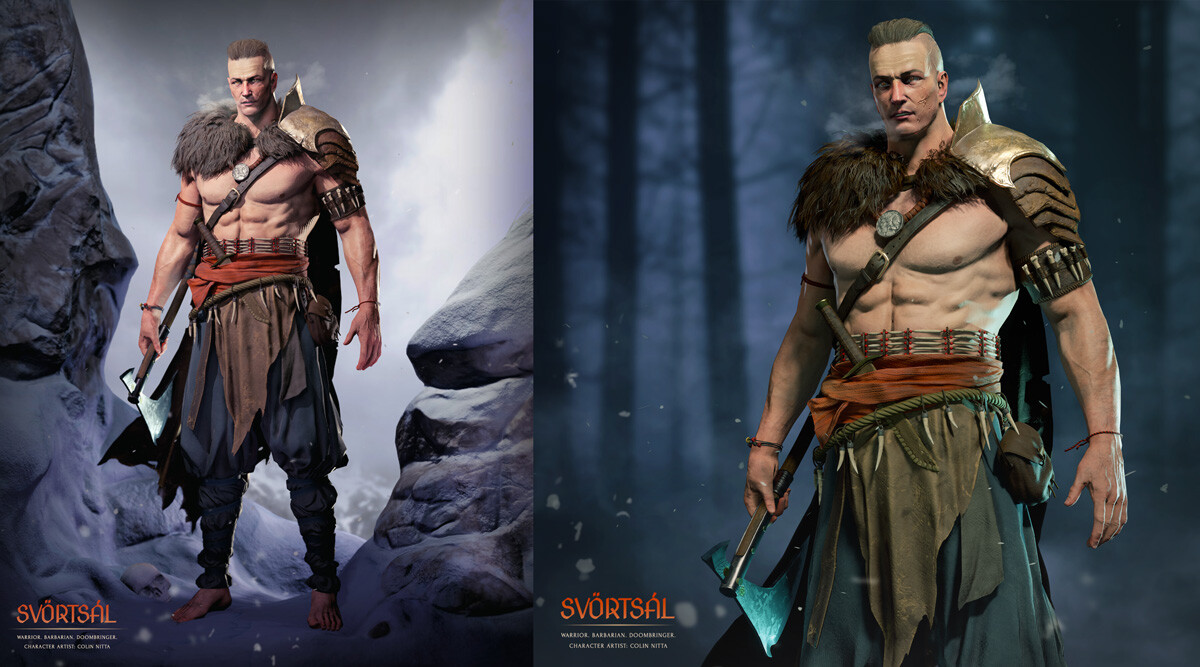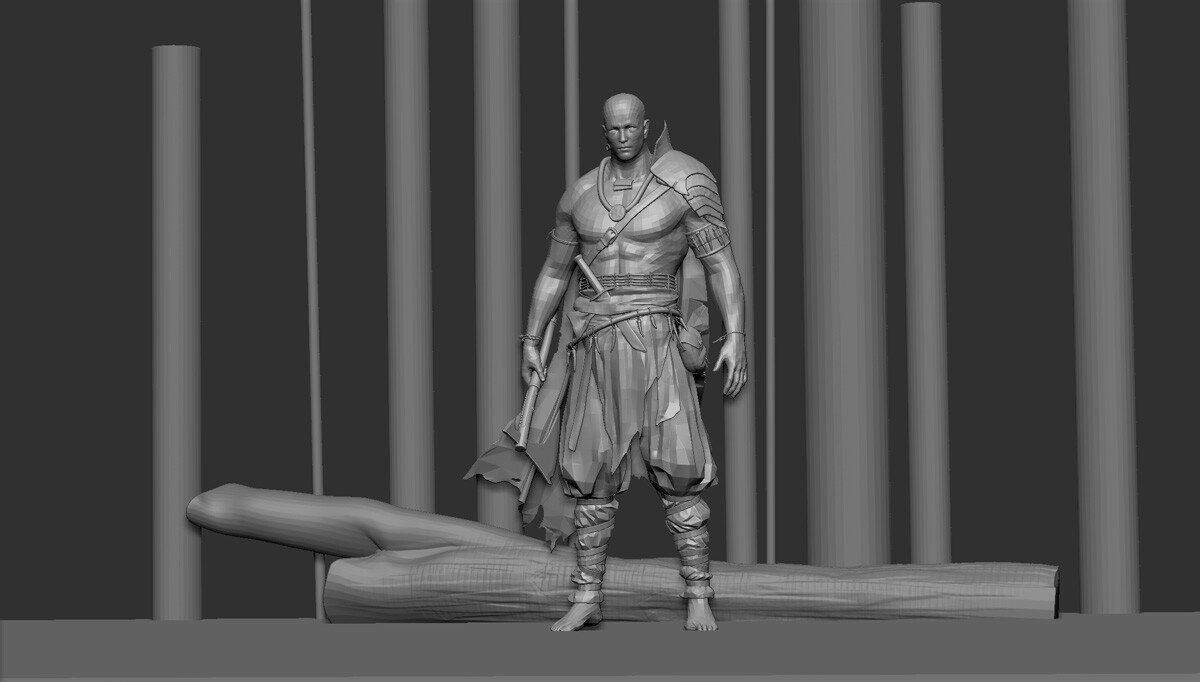If you haven’t read Part 1, check it out here. If you’re just interested in seeing my latest project, feel free to check it out at my artstation here.
Around the time when I was working on my portrait studies, my mentor suggested to me that I look into education with The Vertex School. I was considering a more intensive course for some time but wasn’t sure where to go. And to be honest, I needed a push. I had learned so much on my own that I was unaware of how helpful a teacher could be.
I decided to enroll in a Character Art for Games course taught by artist Ackeem Durant. The program was taught through video content, designed for a ten week course with weekly meetups for discussion and critique. It felt like the perfect time as I really wanted to push myself to model a proper games character and see what I could do in an environment of like minded students.
For two weeks prior to the course I worked up this concept of a barbarian character with a friend that supplied the narrative concept. It was a return to 2D challenges and I worked through a lot of bad ideas until I finally found something I liked.
Week 1: Block In
After being delayed for a week, the class finally got started. I could hardly wait! After working for 7 months in isolation, I could share my progress week by week and compare myself to others at a similar level. It was a burst of energy and I wanted it to sustain me. A last minute change led to the founder of Vertex School, Ryan Kingslien, to take over for Ackeem and he ended up being our instructor for the majority of the class. While somewhat disappointed by this (I really liked Ackeem’s work, he was the main reason for selecting this course), I decided to try my best regardless and I’m glad I did.
Week 2: Refinement, Marvelous Designer
Ryan told me that my character would live or die depending on how well I could execute the anatomy. Challenge accepted! I knew Ryan was a respected anatomist and took it on knowing he would point out the flaws in my work and push me to be better.
This part of the course also covered Marvelous Designer which really leveled up what I could do with cloth. The pants in particular really benefited from this!
Week 3: Refinement, Marmoset Toolbag
Watching the videos by Ackeem and listening to Ryan’s feedback each week gave me the feeling I had two teachers instead of one. This was good and bad. On one hand, I got different perspectives from each instructor, which was an added benefit. But Ryan didn’t know the exact nature of the content Ackeem had recorded. So sometimes, I felt like we had specific questions that were only halfway addressed.
Regardless, I was keeping up each week, spending a ton of time watching and re-watching the videos to make sure I understood the content. So much of it was totally new to me which was surprising. I had many gaps in my personal knowledge, especially regarding ZBrush. And I had never previewed my model in Marmoset toolbag as part of the process, which I now do EVERY time. Such a critical step and I wasn’t aware of it before!
Week 4: Final High Poly
Taking all my assets to a polished high poly stage was very informative. It made me realize just how much effort this takes and how it all needs to pay off properly once a bake is executed. Skin texturing in particular was really interesting as we were learning how to work with assets from Texturingxyz. I had learned some of this methodology already but Ackeem explained it in a way that just fit nicely into the overall workflow and stressed style over pure realism. I think it’s easy to forget with something like skin pores that you only need as much detail as will benefit the final render. Not everything has to be 100% photoreal.
Week 5: Low Poly
Low poly turned out to be a really substantive challenge. I had always struggled with polycount but the issue remained abstract in my mind. Now I was aiming for roughly 100,000 triangles and suddenly it seemed very pertinent. Ackeem’s lectures were very good but he was working completely in Maya. I knew from experience that Blender could handle the low poly process with just as much efficiency so I opted to work in that instead. I hope in the future that more educators choose Blender for the base 3D program. It’s open source and I think now, more and more people getting started in 3D are choosing Blender.
In any case, the software really wasn’t the problem here, it was how I chose to spend polys! The bone girdle around my character’s waist turned out to be horrendously expensive, something I wasn’t anticipating at all. Every single little cylinder is very costly, and when there is a hundred of them… well you end up realizing that like 25% of your character’s poly count is in a tiny area on the waist. I ended up reducing them a lot but it resulted in a lot of head scratching as I struggled with optimization. And those pants… god those pants were tough, I actually restarted them at a certain point when I knew they were becoming too dense. Another hard lesson!
Week 6: UV’s
Whereas I struggled with the low poly step, I enjoyed UV’s. They are meditative in their way and so much less stressful. I finally learned how to enlarge the face to give it more topological space and answered a question I’d had for a long time: how do artists separate out their UV sheets? Turns out its not that complicated and more a matter of practical organization.
I also made some very subtle edits to the face, making minute changes in the eye and lip regions.
Week 7: Bake and Textures
I had finally reached my favorite phase: texturing! This is when I would say the class really turned a corner for me. We learned techniques for projecting skin textures with Mari and I saw just how effective albedo skin from photography can be. I actually own some cross-polarization photography equipment so I used my own skin tone – it ended up working pretty well!
All my previous struggles with texturing ended up helping me a lot in this phase. Much of the content was still new but I could add my previous experience to it, helping to overcome some predictable road blocks in the process.
Week 8: Hair
I was riding high… that is, until the hair portion of the class. The above hair images are just a few of my mistakes – there are many more! This was so frustrating after I felt like I was doing really well in the texturing phase. Although only one week was allotted for hair, I spent roughly three weeks, making a TON of mistakes, throwing out my results and starting over.
I got these results only after a really deep period of struggle. Even now I see some issues. The hair roots need to be better defined and the fur is a bit messy. But it was a massive learning process, and all the mistakes truly made me humble – hair is a beast all on its own!
Week 9: Final Render – First Pass
Ackeem mentioned that finishing a piece is typically the hardest part. So true! By the time it came to setup my final scene in Marmoset I felt like I was going to nail this thing once and for all. But getting it just right remained elusive. I had this whole idea that my character would be in a snowy landscape, facing some unseen enemy. Its a nice idea, but snow is incredibly hard to pull off.
I tried out all kinds of scenes with him in the woods but in the end nothing felt right. They are interesting sketches for a potential future scene but the brightness of the snow was not playing nicely with my dark moody barbarian and it had to be scrapped.
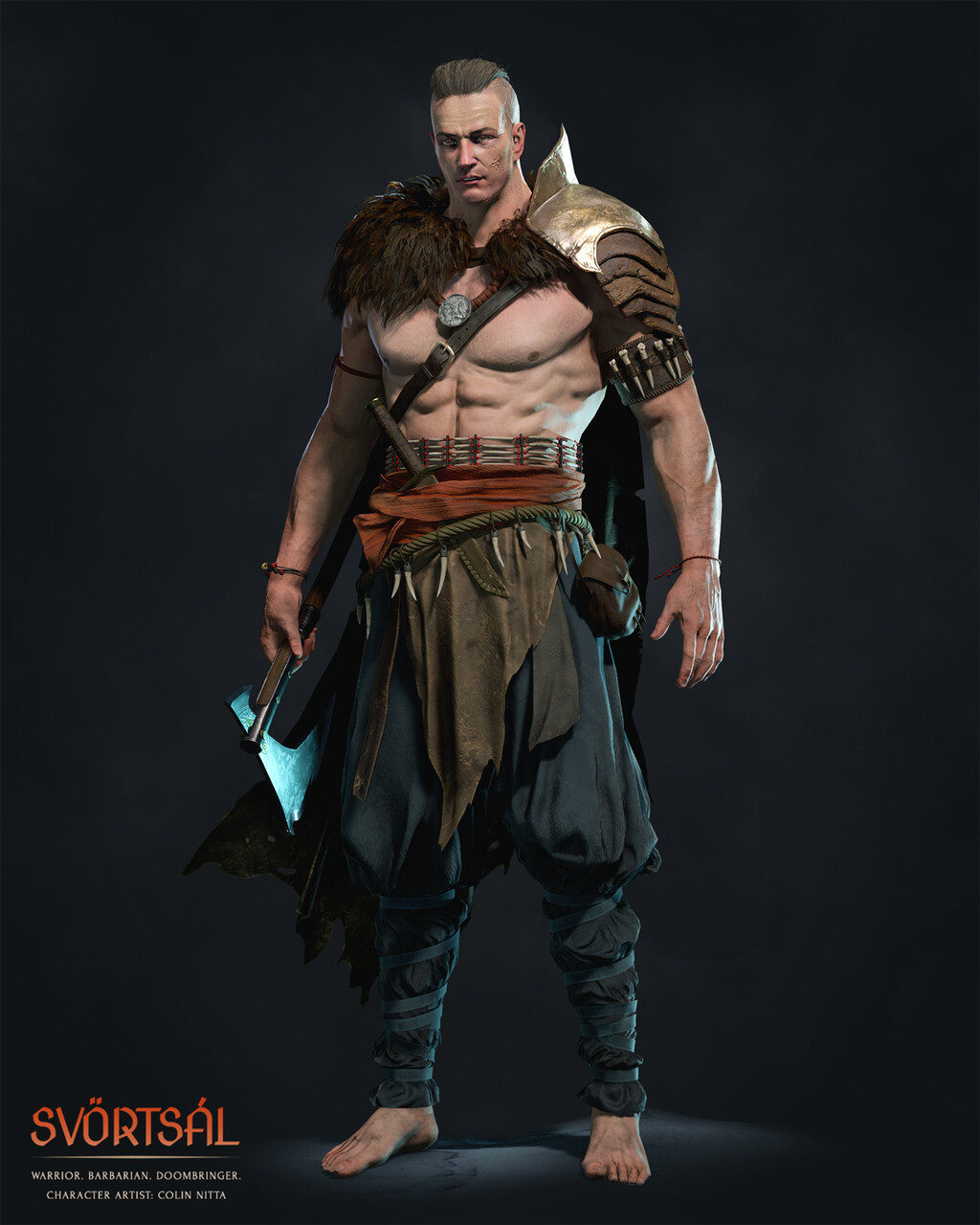
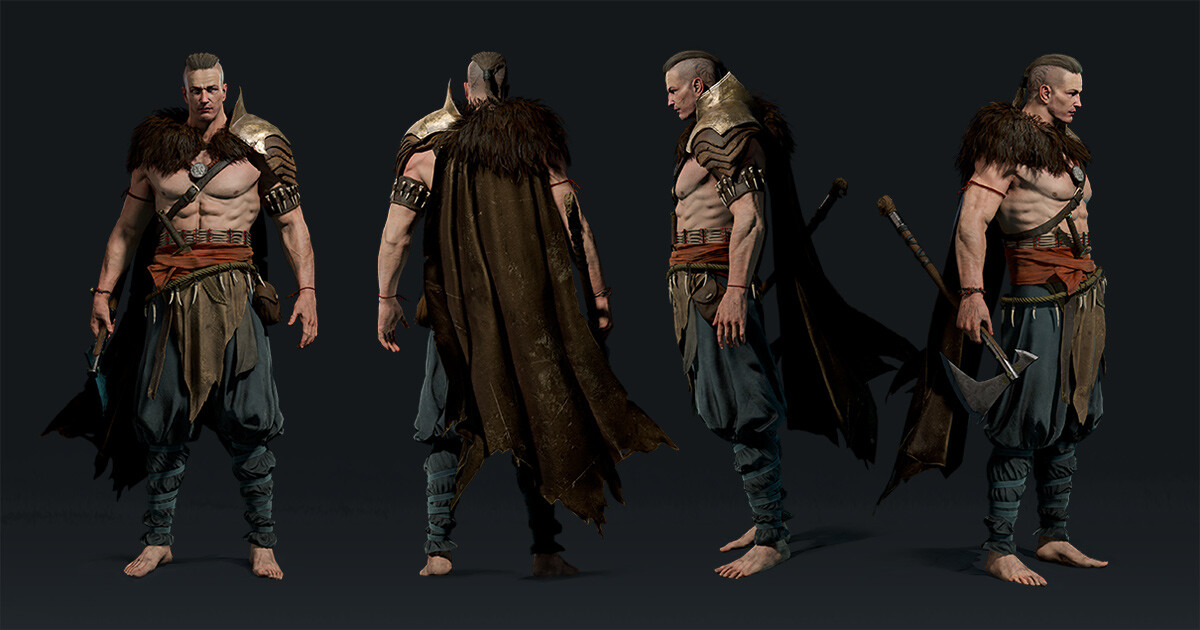
Week 10: Final Render – Final Pass
In the end I dropped out all my snowy landscape except for a little island at his feet and that just made everything else a simpler problem to solve. I have this issue where I always choose the most ambitious goals for myself. I see complexity and I want to chase after it. But complexity is not always the best solution!
For more views of the final, check out the project here. Overall I would say the education I received from Vertex School was very good. Every education program will have its strengths and weaknesses but on the whole I gained so much from my experience there and I would not be at the level I am today without it!
So that’s my year of 3D education. I feel exhausted just writing about this year. We all know what also makes this year exhausting to write about: the pandemic, the election, the entire world. My cat died. It was a lot. If there’s one thing I’ve really learned through the entire experience, it’s this:
Do not try to avoid mistakes. Mistakes are the route to betterment. Take every mistake like a badge of honor, wear it proudly, look at it as a battle scar. I can’t tell you how many videos on youtube flashed up while I was studying with a click bait title like “Top Ten Mistakes All Artists Make.” What are you supposed to do, watch this and then cleverly avoid them? Such thinking is futile and only holds us back. Make those mistakes, then join a critique group or find a mentor and show them your mistakes, and build off them. That’s my credo and I’m sticking to it!

